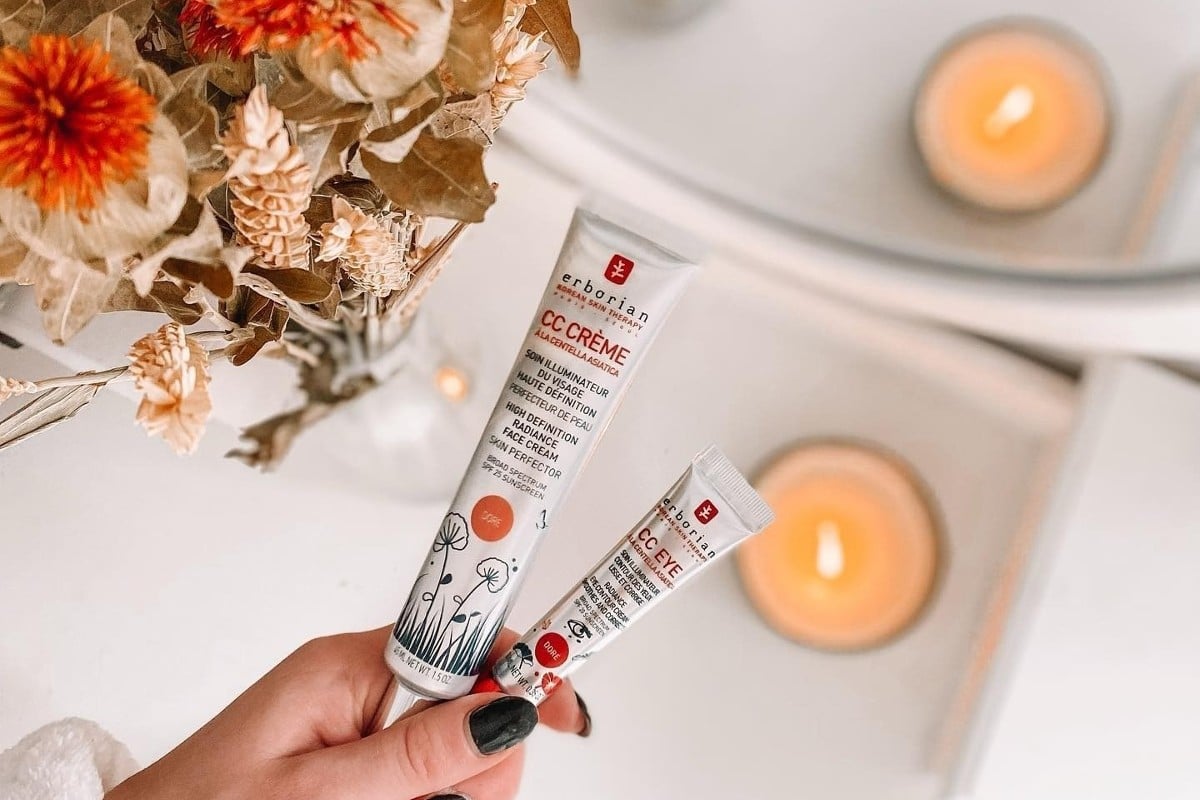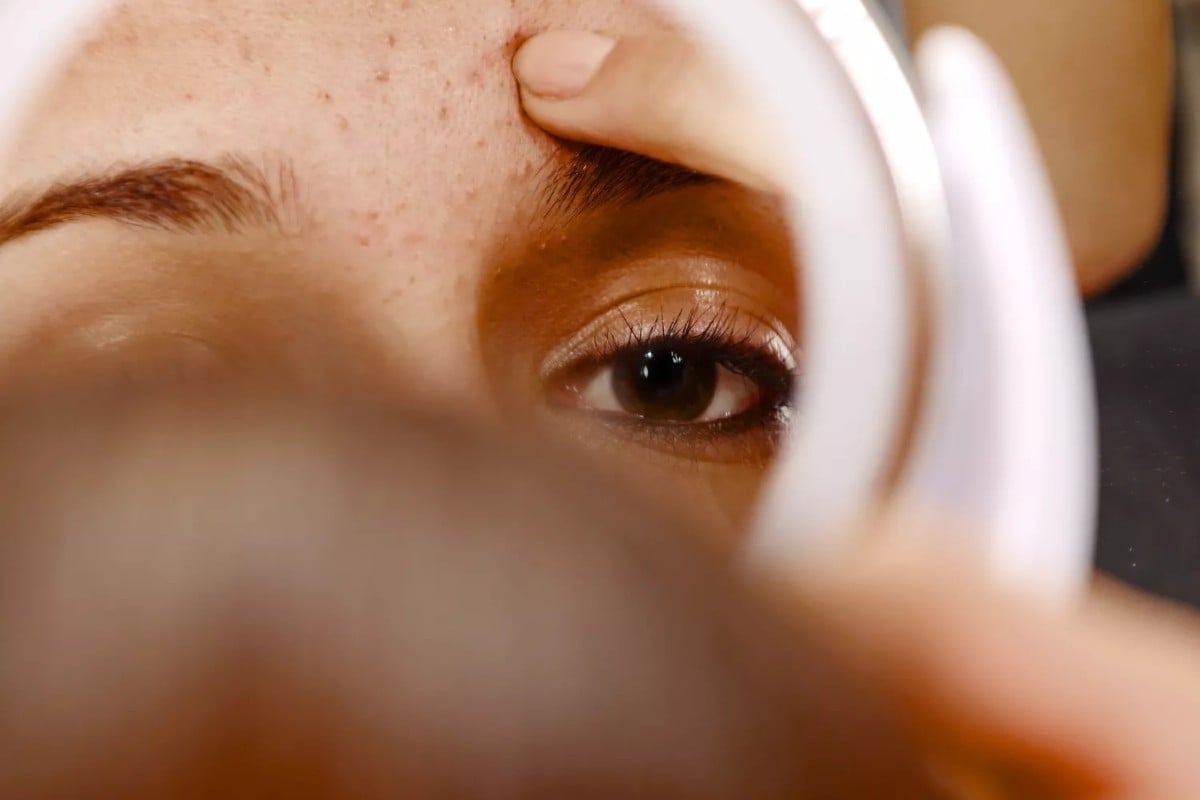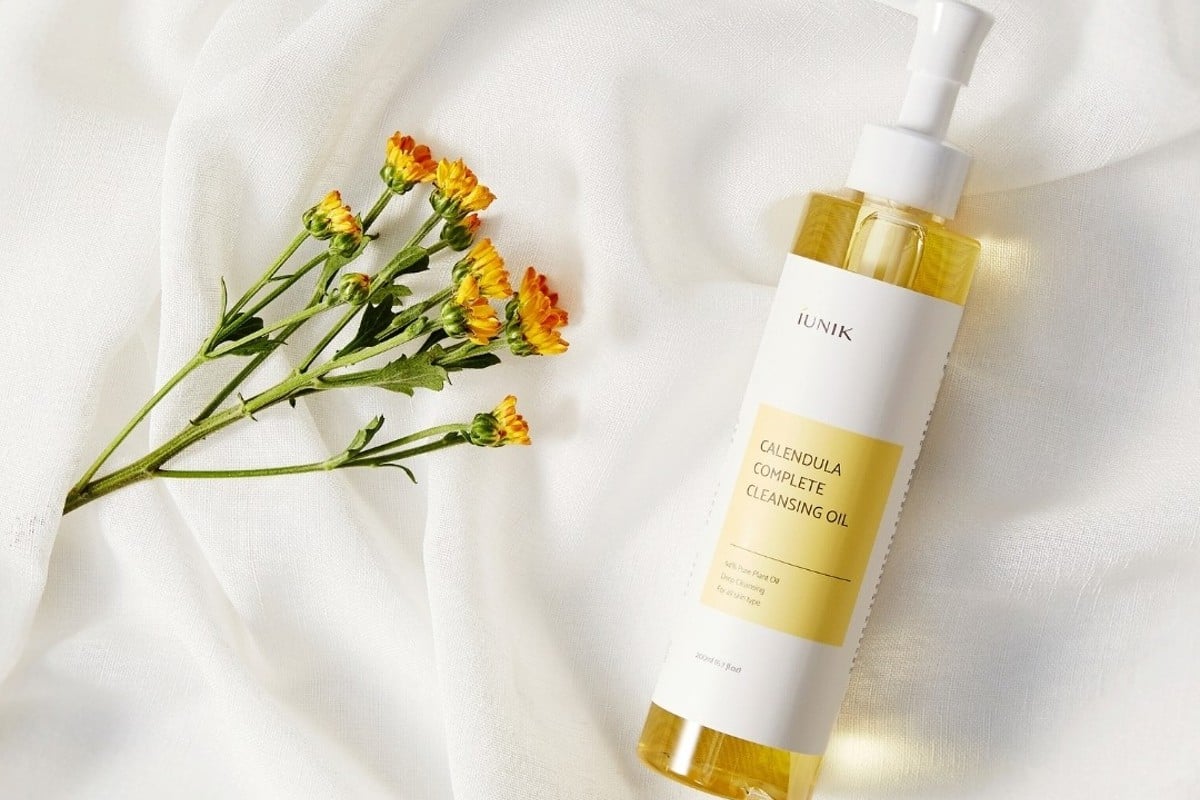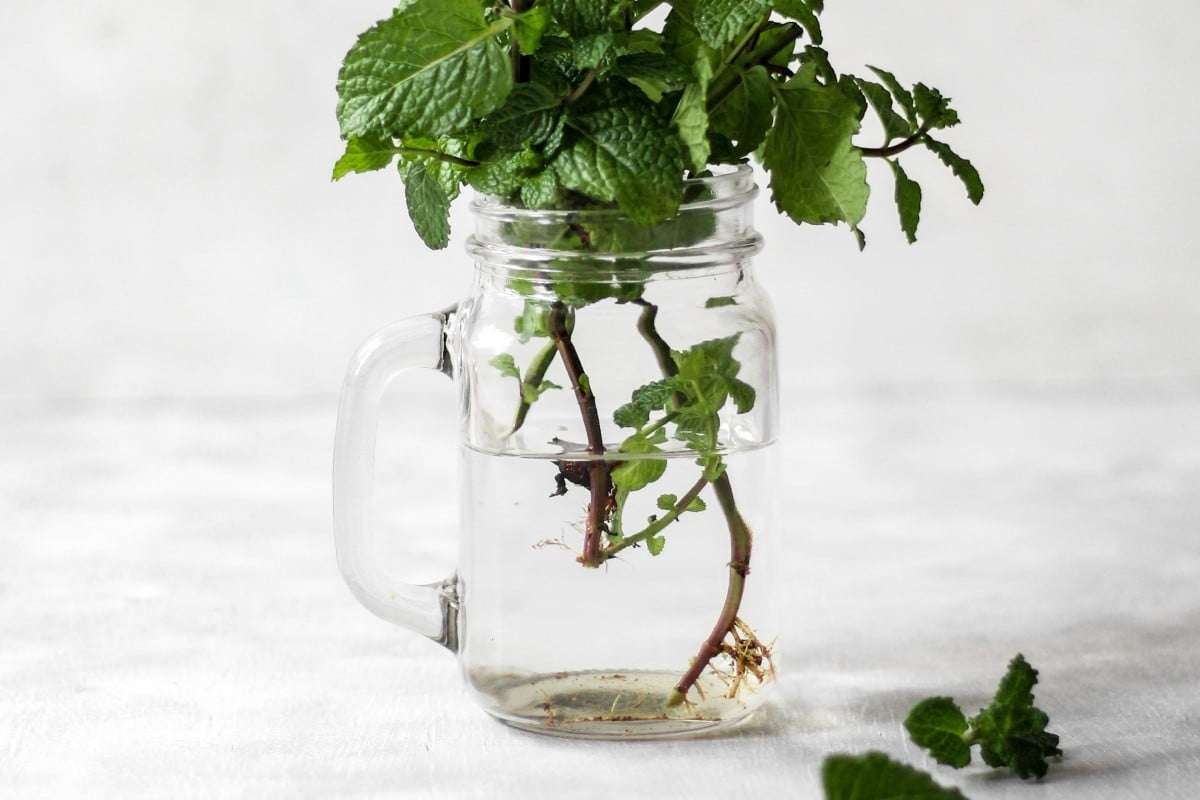While genetics and diet take the spotlight in the acne drama, let’s not forget about the impact that skincare and makeup products can have on our skin. Our skin is unique and can have hundreds of different reactions to the stuff we put on it, depending on the ingredients in those products. And when the skin is prone to acne, it becomes a never-ending chemistry experiment, where one wrong ingredient can turn our face into a battleground of pimples. Let’s take a closer look at the most common beauty products that can worsen breakouts and the acne-causing ingredients you must cut out from your routine.
Can skincare and makeup products worsen acne?
Yes, using topical products can worsen acne breakouts. For example, applying certain essential oils or comedogenic products, excessive cleansing, and using soaps with high pH levels can disrupt your skin’s natural barrier. It can also disturb the balance of the microbiome, which is the collection of good bacteria that maintains your skin healthy. When these things are thrown off balance, they can trigger inflammation and make acne worse.
Just to give you an idea, a 2020 Korean study on 539 people found that a whopping 38% of participants had their condition worsened due to the continued use of cosmetics.[1] Similarly, Chinese studies have identified makeup products as a major risk factor for acne.[2]
Products to avoid if you have acne
Anything that’s comedogenic
Comedogenic products are the worst thing you can put on your acne-prone skin. They often block the skin’s pores and trigger blackheads and whiteheads. Most types of products can be comedogenic, including creams, sunscreens, and foundations, so you need to make sure nothing in your routine will clog your pores. Essentially, you must look for the “non-comedogenic” claim on the product label. However, it’s not unusual for certain oils, fatty acids, and waxes with a moderate comedogenic score to be found in so-called non-comedogenic products. So double-check the ingredient list to confirm that it doesn’t contain comedogenic compounds (here’s a full list of ingredients ranked by their comedogenic score).
Occlusive moisturizers
An occlusive moisturizer can be non-comedogenic and still make acne worse. These moisturizers cover the skin’s surface with a protective film that can trap possible pore-clogging elements in your skin. Not only that, but they’re thick and leave a greasy feeling.
Petrolatum is the most common occlusive, and while it doesn’t obstruct the pores, it can trap dirt, dead cells and bacteria within the skin. As a brief reminder, these are the culprits behind breakouts. Mineral oil, which is derived from petroleum, is another popular ingredient linked to chloracne, a type of acne caused by the inflammation of the skin glands.[3]
Heavy liquid and oil-based makeup
Most liquid foundations and concealers contain oils, emollients, and waxes that can clog pores and give you breakouts. The solution? Use mineral-based makeup, which is lighter, powdery, and made from larger particles that are less likely to get trapped in pores. Plus, mineral-based products are naturally oil-free, which is ideal for acne-prone skin.
Of course, not all liquid makeup products worsen acne as long as they’re lightweight, breathable, and non-comedogenic.
Silicone-based foundations
Foundations with high amounts of silicones can be the ones responsible for your acne breakouts, especially if you’re not cleansing your face and removing makeup thoroughly. Although silicones allow the foundation to create a smooth texture and make it silky and easy to spread, they are not friendly to acne-prone skin.
Silicone molecules are relatively large and non-porous, which means they can form a barrier on the skin that doesn’t let the skin breathe and regulate sebum production. That screams new blackheads.
Double-check the ingredients in your foundation and concealer. If you spot a bunch of silicones (like dimethicone, cyclohexasiloxane, cyclopentasiloxane, dimethiconol, phenyl trimethicone, or cyclomethicone), swap them out for something more acne-friendly.
Heavily scented products
We all like our products to smell good, but at what cost? Most fragrances are skin irritants and can exacerbate inflammation. Given that acne-prone skin is already sensitive and inflamed, bombarding it with heavily scented products will only worsen breakouts. Besides, according to the American Academy of Dermatology, synthetic fragrances are the most common cause of contact dermatitis.
As if that isn’t bad enough, the term “fragrance” or “parfum” takes a single spot on the ingredient list. However, in reality, this is only an umbrella term for thousands of compounds. And guess what? You could be allergic to every single one of them. Unfortunately, allergic reactions to fragrances are very common and can manifest as redness, swelling, and even acne-like breakouts known as acne cosmetica.
Sulfate-based cleansers
Sulfates like sodium lauryl sulfate (SLS) and sodium laureth sulfate (SLES) are powerful surfactants that create that satisfying lather we often associate with a deep cleanse. Although they’re effective at removing dirt, and impurities, they can also strip away the skin’s natural oils. This forces the body to compensate for the loss by producing more sebum, which leads to more acne and a never-ending cycle of breakouts.
The solution? Look for cleansers that contain mild surfactants, such as cocamidopropyl betaine, sodium lauryl sulfoacetate, or lauryl glucoside.
Makeup brushes and sponges
Dirty makeup brushes and sponges are major culprits behind acne because they can harbor bacteria that can transfer to your skin. University research found that 96% of the sponges donated for the study were contaminated with fungus and other harmful substances.[4]
Besides, using dirty brushes and sponges can lead to cross-contamination. If you have acne-prone skin and use the same brush or sponge for different products, you may be spreading bacteria and oils from one area of your face to another, making matters worse. The moral of the story? Clean your brushes regularly to maintain good hygiene.
Products with alcohol
Products that contain alcohol may be the reason your acne got worse. Alcohol is often used to preserve the active ingredients and reduce bacterial contamination, but it may very well wreak havoc on your skin.
Alcohol can be classified as drying alcohol and fatty alcohol, and neither of them is a friend to acne. Drying alcohol (like isopropyl, ethyl, benzyl, ethanol, or isopropanol) removes moisture from the skin. On the flip side, fatty alcohol (like cetearyl, isocetyl, and stearyl alcohol), which despite being more gentle and moisturizing, it’s very comedogenic.
To give you a couple of examples, a product that contains isopropyl alcohol may leave your skin feeling tight and parched, while a moisturizer with isocetyl alcohol can clog your pores and trigger acne flare-ups.
Haircare products
Most acne sufferers are careful about what they put on their face, but not their hair, even though it’s very common to get acne from haircare products. Shampoos and conditioners can contain pore-clogging ingredients that can come into contact with your skin along the hairline, forehead, and cheeks if not washed properly. As you may have guessed, this will lead to new pimples or worsen existing ones.
Too much benzoyl peroxide and exfoliants
True, benzoyl peroxide, salicylic acid, and retinol are effective acne treatments, but using them too frequently on a daily basis will work against your breakout-prone skin. Never apply these treatments at the same time of the day, and give your skin enough time to recover before using another treatment. Overdoing it can disrupt your skin’s natural barrier and leave it susceptible to bacteria and inflammation.
Expired products
Using expired products is never a good idea, especially when you have acne. Once a beauty product hits its expiration date, its active ingredients become less effective and even destabilize, leading to potential irritations and allergic reactions. Moreover, expired products create a breeding ground for bacteria, which can further aggravate acne-prone skin.
Contamination can sneak in when products are exposed to air, moisture or get in contact with contaminated applicators. So store your beauty items in a cool and dry environment, away from direct sunlight, and throw them away once they’re past their expiration date. Here you can learn more about how to store your products to extend their shelf life.
Acne-causing ingredients to avoid
- Silicone
- Synthetic fragrances
- Mineral oil
- Sulfates
- Drying and fatty alcohol
- Algae extract
- Synthetic dyes
- Sodium chloride
- Coconut oil
- Soybean oil
- Avocado oil
- Petrolatum
- Tocopherols
- Caprylic triglycerides
- Talc
- Laureth-4
- Myristyl myristate
- Isopropyl isostearate
- PEG
How not to make your acne worse
- When examining skincare labels, be wary of common acne-triggering ingredients such as fragrances, alcohol, artificial dyes, sulfates, and heavy oils.
- Use non-comedogenic products.
- Opt for mineral-based makeup.
- Avoid heavy sunscreens.
- Wash your hands before applying products.
- Change your pillowcase regularly.
- Clean your makeup brushes and sponges.
- Focus on your skin barrier more.
- Don’t use expired products.
- Avoid harsh and abrasive cleansers.
- Don’t touch your face excessively.
- Avoid picking or popping pimples.
- Don’t overtax your skin by using a whole ton of new products on your face at once. Skincare is supposed to be a slow and controlled process where you add new products into your routine gradually and allow your skin to acclimate.
- Never sleep with makeup on.
Read next: 6 Household Items That Can Cause Acne You Never Thought Of
Sources
- Suh, D-H, Oh, H, Lee, SJ, Kim, HJ, Ryu, HJ. Relationship between acne and the use of cosmetics: Results of a questionnaire study in 539 Korean individuals. J Cosmet Dermatol. 2021.
- Wu TQ, Mei SQ, Zhang JX, Gong LF, Wu FJ, Wu WH, Li J, Lin M, Diao JX. Prevalence and risk factors of facial acne vulgaris among Chinese adolescents. Int J Adolesc Med Health. 2007 Oct-Dec;19(4):407-12. doi: 10.1515/ijamh.2007.19.4.407. PMID: 18348416.
- Yang J, Yang H, Xu A, He L. A Review of Advancement on Influencing Factors of Acne: An Emphasis on Environment Characteristics. Front Public Health. 2020 Sep 17.
- Bashir, A. and Lambert, P. (2020), Microbiological study of used cosmetic products: highlighting possible impact on consumer health. J Appl Microbiol, 128: 598-605. https://doi.org/10.1111/jam.14479





